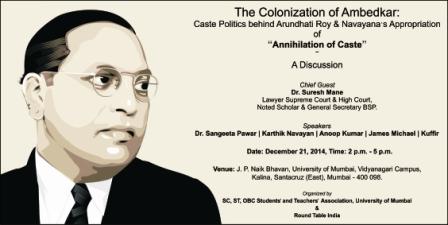Preetika Nanda
 I find it deeply disturbing when debates or articulations tend to neatly categorize tragedies even if it is to highlight lacunae in the way our judiciary functions or various other factors like the extent of media attention to a particular issue and so on. At a very basic human level there is no difference between the pogroms of 1984 and 2002. Both saw the mass murders of innocent people belonging to different minority communities, sanctioned and abetted by those in power.
I find it deeply disturbing when debates or articulations tend to neatly categorize tragedies even if it is to highlight lacunae in the way our judiciary functions or various other factors like the extent of media attention to a particular issue and so on. At a very basic human level there is no difference between the pogroms of 1984 and 2002. Both saw the mass murders of innocent people belonging to different minority communities, sanctioned and abetted by those in power.
There is absolutely no doubt that for the right the Muslim is the perpetual other, meant to be demonized and brutalized. But what should also be kept in mind is the fact that these forces have considered Sikhism as a militant wing of Hinduism despite protests from the Sikhs. The dent in the RSS’ imagination of India and therefore the supposed violation of the body of “bharat mata” brought about by the upheavals during 1984 and bolstered by the role of external influence of Pakistan (albeit there is minimal evidence) in fuelling the Khalistan cause required that a lesson be taught to the Sikhs for their deviance from their “assigned” role. (In one of the articles in a Hindi monthly Pratipaksha, Nanaji Deshmukh, a veteran of RSS, extolled the invasion of the Golden Temple as a prerequisite to national unity and integrity and justified the Delhi massacres.) And that is precisely what happened: punishment in the form of organized massacres, the nature of attacks designed (burning tyres around the neck of male Sikhs) to destroy the distinct identity, which was militantly being asserted.
In this context, to talk of differences obfuscates the flirtations of the Congress with the right wing in the context of violence perpetrated by those in majority. It obliterates that the very basis of the communalization of the ‘Punjab problem’ which was to keep the “Hindu vote bank” intact. It fails to highlight the enmeshing of the supposedly secular with the religious. Moreover, it fails to answer: what do we then make of the role played by the RSS cadres in the pogrom of 1984?

Is there then any difference between the pogroms of 1984 and 2002? Or is an overt manifestation of forces of a certain ideology more worrying than seemingly insidious ones?
Various editorials, articles, status updates are pointing out to the “difference” in the two pogroms. Let’s look at some of these:
While it is true that the political careers of Jagdish Tytler, Sajjan Kumar and HKL Bhagat remained on the peripheries, the orchestrator of Gujarat 2002 is the prime ministerial candidate for the upcoming elections. There is thus a difference between the rising and fading stature of these actors, but what again diffuses the “difference” between the two horrendous events is the denial of justice specially when it comes to the principle of chain of command responsibility which is yet to be included in our judicial system.
The more sophisticated justification in the framework of action-reaction by the head of a proclaimed secular party using the metaphorical fall of a big tree as compared to the “Hindu backlash” trope is equally shameful and appalling.

While I firmly believe that the lingering danger of fascism and the perennial propagation of the ideology of hatred towards one community needs to be resisted with every possible means at our disposal, we should not however overlook or downplay the aforementioned points.
Moreover, while stressing on differences between the two events which completely altered the lives of the survivors, I believe we are again widening the gap between the two communities which has evolved historically since the inception of the Sikh faith and narrowing the possibility of cross community solidarity beyond the politically conscious.
Pinpointing “differences” between the two tragedies will only satiate political agendas, it will not concertize the roads to justice, solidarity will.
~~~
Preetika Nanda is a post graduate student in Conflict and Peace Studies at Jamia Millia Islamia, and is currently working on her thesis which is tentatively titled ‘Patterns of abuse and impunity: a Case Study of the insurgency-ridden Punjab’.










